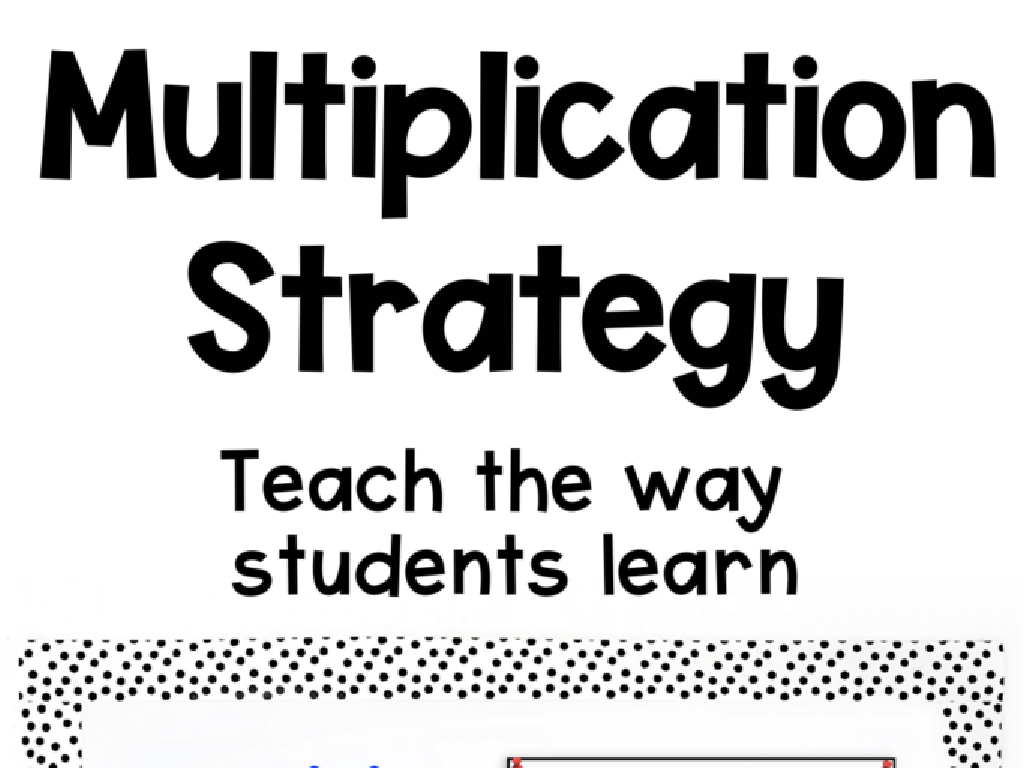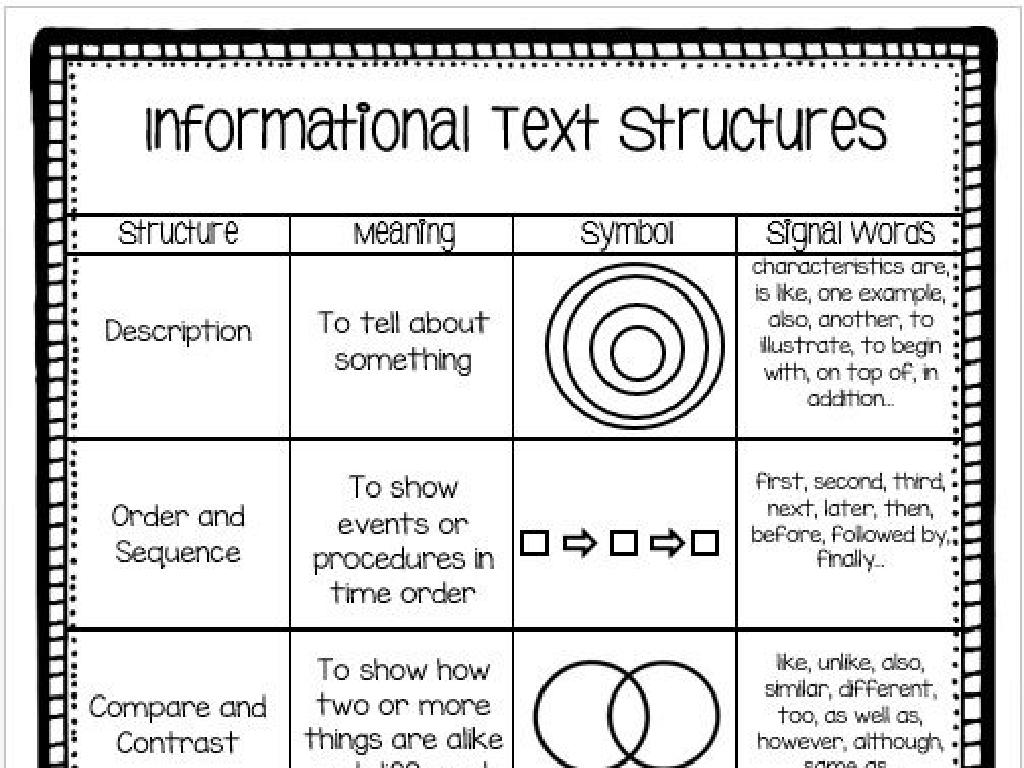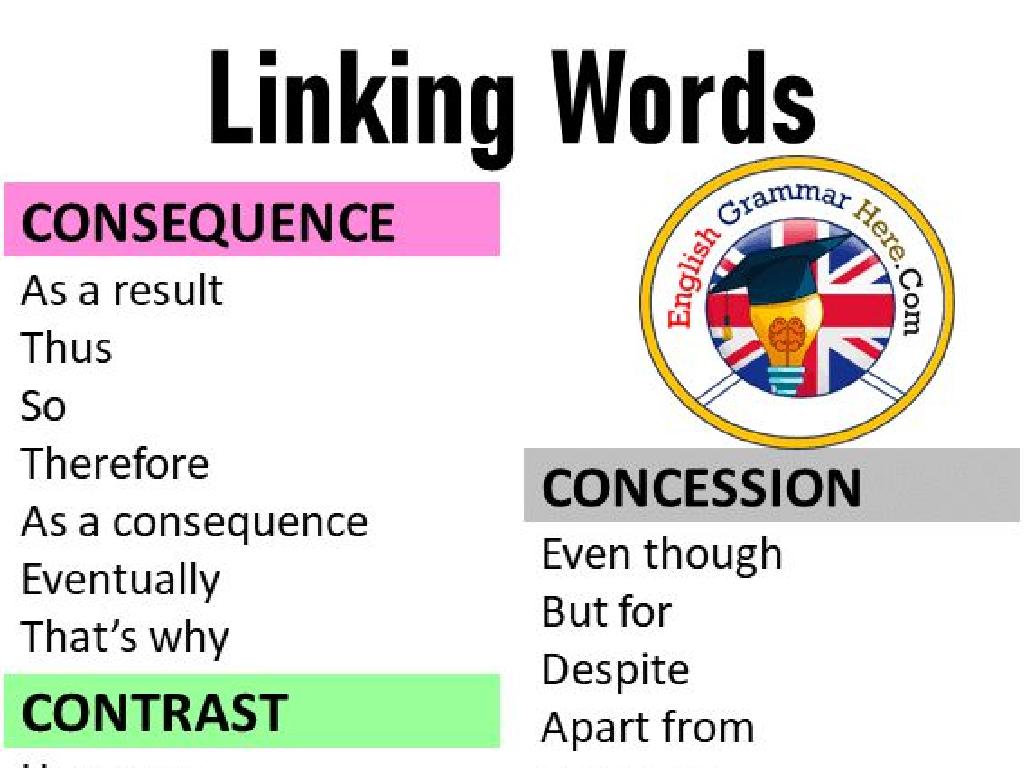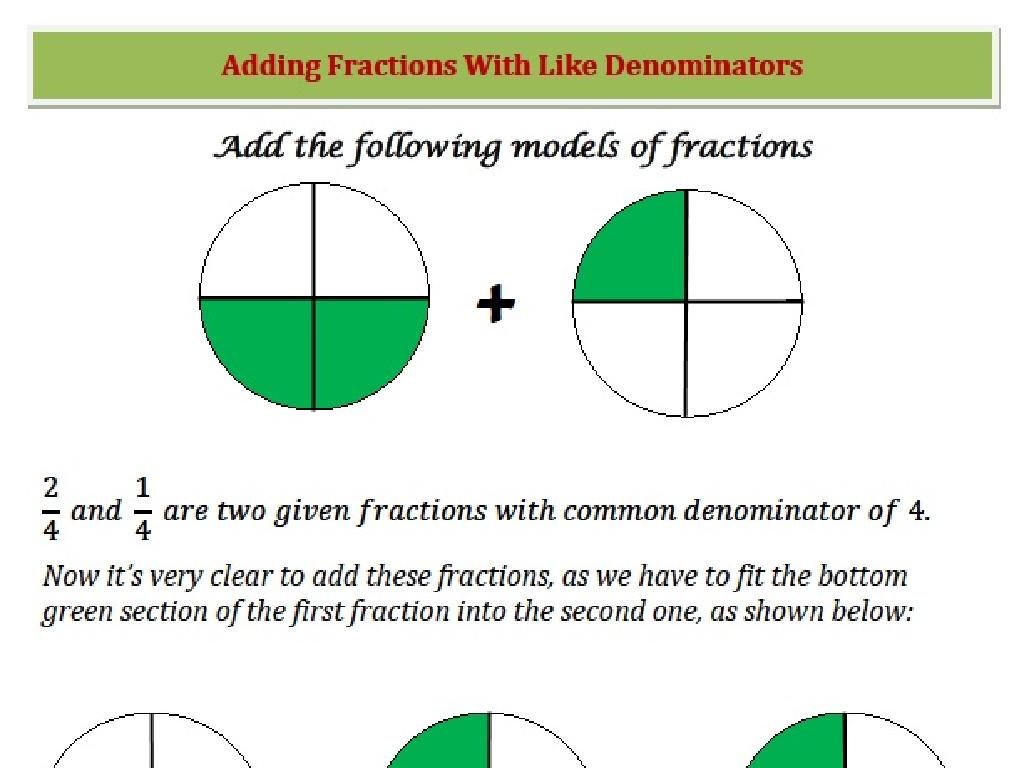Compare Cities And Rural Areas
Subject: Social studies
Grade: First grade
Topic: Community
Please LOG IN to download the presentation. Access is available to registered users only.
View More Content
Welcome to Our Community!
– Learning about living places
– Cities vs. rural areas
– Cities are big and busy, rural areas are smaller and quieter
– Where do you live?
– Do you live in a city, a small town, or the countryside?
– Sharing our experiences
– We’ll talk about what makes our homes special!
|
This slide is designed to introduce first graders to the concept of different living environments. Start by explaining that people live in different kinds of places, some live in cities with lots of buildings and cars, and others live in rural areas where there are more fields and fewer houses. Ask the students where they live to make the lesson interactive and to help them relate to the topic. Encourage them to think about their own community and what makes it unique. This will set the stage for a discussion on the similarities and differences between urban (cities) and rural (countryside) living areas. The goal is to make students aware of diverse living settings and to appreciate their own community.
Our Community: City vs. Rural
– What is a community?
– It’s where people live, work, and have fun together!
– Communities can be big or small
– City communities
– Cities have lots of buildings and busy streets
– Rural communities
– Rural areas have more open spaces and nature
|
This slide introduces the concept of a community to first graders, emphasizing that it’s a place where people come together to live their lives. Highlight the differences between communities in terms of size and location, such as cities with their tall buildings and bustling activity versus rural areas with open spaces and a closer connection to nature. Use simple language and relatable examples to help students understand the diversity of communities. Encourage them to think about their own community and what makes it unique. In the next class, consider having a discussion or drawing activity where students can depict their own community and share what they love about it.
City Life vs. Rural Life
– Cities: bustling with people
– Cities have lots of people and cars moving around
– Skyscrapers reach the sky
– Tall buildings everywhere, some are homes, some are offices
– Fun places to visit
– Zoos, museums, and playgrounds are some fun city spots
– Rural areas: peaceful, spacious
– Countryside has farms, fields, and fewer people
|
This slide introduces first graders to the concept of urban (city) and rural (countryside) living. Emphasize the busy, crowded nature of cities with their tall buildings, which are very different from the open, quiet spaces in rural areas. Highlight the variety of places to visit in a city, such as stores, museums, and parks, which might not be as common in the countryside. Use simple language and real-life examples that first graders can relate to, like comparing their local playground to a large park in the city. Encourage them to think about what they might see and hear in both places, fostering an understanding of the differences between city and rural life.
Rural Life: Country Living
– Rural areas mean more open space
– Think fields, forests, and fewer buildings
– Homes can be farms or small houses
– Some people grow their own food
– Houses are spread out far apart
– Neighbors are not as close as in the city
– Life is different from the city
|
This slide introduces students to the concept of rural life as part of the broader topic of comparing cities and rural areas. Emphasize the abundance of open spaces in rural areas, which can include fields, forests, and large areas of land. Explain that people might live on farms where they can grow their own food, or in small houses that are not close to each other, unlike the closely packed houses in cities. Highlight the differences in lifestyle, such as the distance between neighbors and the quieter environment. Encourage students to think about the advantages and disadvantages of living far apart from others and how this might affect daily life and community interactions.
City Life vs. Rural Life
– Cities: many buildings close by
– Rural areas: more space around
– Cities: lots of cars and buses
– Rural areas: tractors and animals
– You might see cows, horses, and chickens in the countryside!
|
This slide aims to help first graders understand the basic differences between urban (city) and rural (countryside) living environments. Emphasize the visual contrast between the crowded buildings in cities versus the wide-open spaces in rural areas. Discuss the different types of transportation and why there are more cars and buses in cities, while rural areas have more tractors for farming and animals roaming around. Use pictures or stories to make these concepts relatable, and consider asking the children about their own experiences in these different settings to make the lesson interactive.
What’s the Same? Cities vs. Rural Areas
– Both have homes and schools
– Whether in a city or countryside, people live in houses and go to school.
– Fun places are everywhere
– You can find parks or playgrounds to play in both areas.
– Hardworking, helpful people
– No matter where, people work jobs and support one another.
– Communities in both areas
|
This slide aims to highlight the similarities between urban (cities) and rural (countryside) areas to help first graders understand that despite the differences in environment, there are common aspects in every community. Emphasize that all communities have homes where families live, schools for learning, and places to enjoy like parks or movie theaters. Discuss how people everywhere work in different kinds of jobs and help their neighbors and friends. This will help students see that communities are built on similar foundations, regardless of their size or location.
Class Activity: Our Community Maps
– Draw a map of your community
– Include your home and school
– Add your favorite place to visit
– Mark city or rural area
|
This activity is designed to help first graders understand the concept of community and the differences between city and rural areas. Provide each student with a large sheet of paper and drawing materials. Encourage them to start by drawing their home and then add the school, ensuring they mark the path they take to get there. Next, ask them to add their favorite place to visit, like a park or a relative’s house. Guide them to think about whether they live in a city or a rural area and have them label that on their map. Possible activities for different students could include drawing different community helpers they see, identifying types of buildings, or even drawing the types of transportation they use. This hands-on activity will help them visualize and differentiate between various community layouts and the characteristics of their own living environment.
Sharing Our Maps: Our Communities
– Show your map to the class
– Talk about your community
– Is it a city or a rural area?
– Share what you love most
– Maybe it’s a park or a playground?
– Listen to classmates’ stories
|
This slide is for a class activity where students will present the maps they’ve created of their communities. Encourage each child to speak about whether they live in a city or a rural area, pointing out specific places they’ve included on their map. Ask them to share what they like best about where they live, such as a favorite park, playground, or anything special to them. Ensure that each student gets a chance to present and that the rest of the class is listening respectfully. As an extension, you can have students ask questions about each other’s maps to foster a discussion about the similarities and differences between living in a city and a rural area.
City or Country: We’re All Community!
– Cities and rural areas are different
– Both are places where people live
– Communities help us make friends
– Think of school as a community where we make friends
– We help each other in communities
– Like sharing toys or helping in class
|
This slide wraps up our lesson on comparing cities and rural areas by emphasizing the commonality that both are types of communities where people live, make friends, and support each other. Reinforce the idea that no matter where we live, the sense of community is what brings us together. Encourage the students to think about their own experiences in their community, how they make friends, and ways they can help others. This will help them understand the importance of community in both urban and rural settings. Share examples of community activities, like a city park picnic or a rural barn-raising event, to illustrate the concept.





